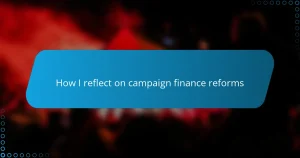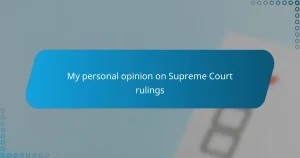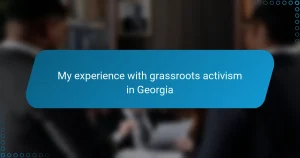Key takeaways
- Understanding narratives and personal biases is essential to differentiate meaningful analysis from noise in political commentary.
- Media bias can often be detected through word choice, emotional language, and the framing of stories, impacting how information is perceived.
- Fact-checking and evaluating sources critically is necessary to uncover reliable information, recognizing that even credible outlets may skew facts.
- Identifying personal and political agendas helps readers understand the underlying motivations behind commentary, enhancing media literacy.
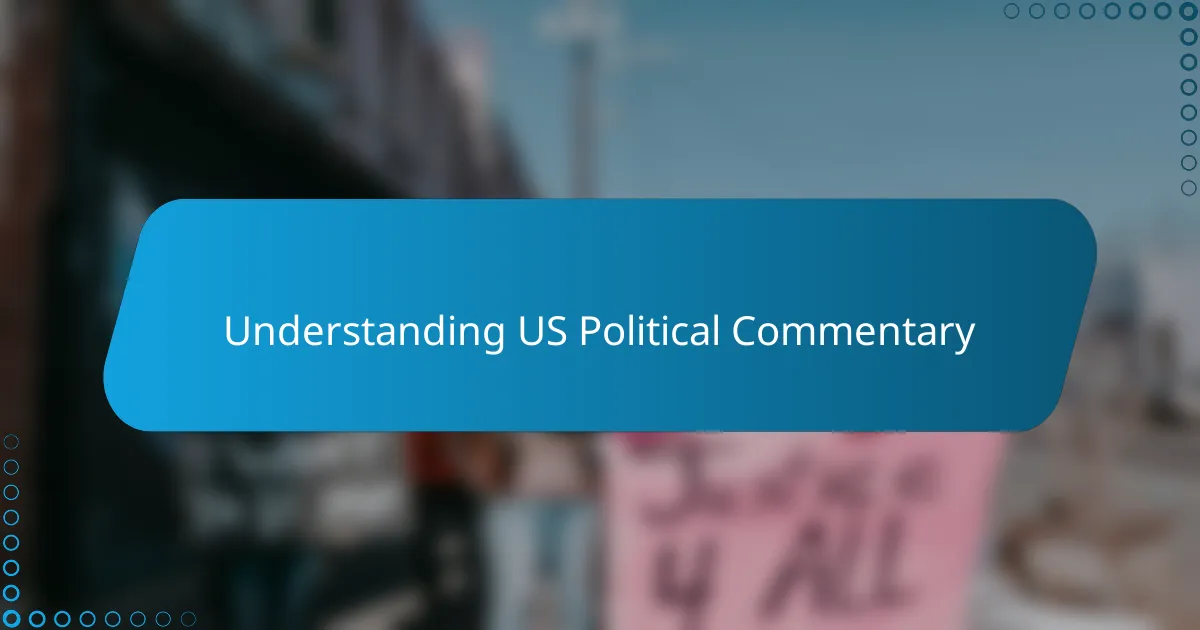
Understanding US Political Commentary
When I first started following US political commentary, I was struck by the sheer volume of voices clamoring to be heard. It made me wonder: how do you separate meaningful analysis from noise? Over time, I learned that understanding the underlying narratives and biases is crucial to making sense of the commentary landscape.
The emotional undertone in political commentary often reveals more than the facts themselves. I’ve noticed that commentators’ personal stakes tend to color their perspectives, which can either illuminate or obscure the truth. Have you ever caught yourself reacting emotionally to a piece, only to realize later that it was crafted to provoke that very reaction?
What fascinates me most is how political commentary becomes a mirror of cultural values and tensions at any given moment. It’s not just about politics; it’s about people’s hopes, fears, and identity. Recognizing this makes the commentary richer and more complex, prompting me to ask: whose story is really being told here?
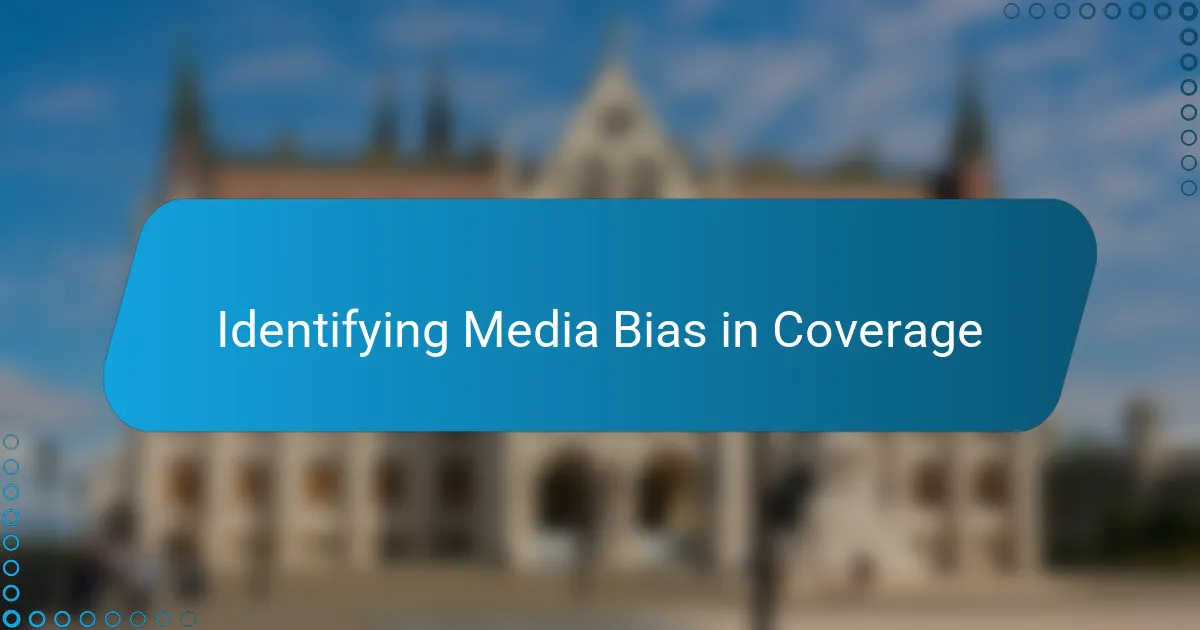
Identifying Media Bias in Coverage
Bias in media coverage often hides in plain sight. I recall reading an article that seemed balanced at first, but then I noticed the choice of words subtly swayed the reader’s opinion. Have you ever paused mid-article and questioned why certain facts were emphasized while others were barely mentioned?
One thing I’ve learned is to pay close attention to the sources cited and the framing of stories. For instance, when a report consistently highlights specific viewpoints or omits opposing voices, it signals a one-sided narrative. Doesn’t it make you wonder what might be left out and why?
Emotional language is another big giveaway. When coverage uses charged words or paints characters as villains or heroes, it’s often trying to shape your feelings more than inform you. From my experience, spotting these cues turns consuming news into an active investigation rather than passive acceptance.
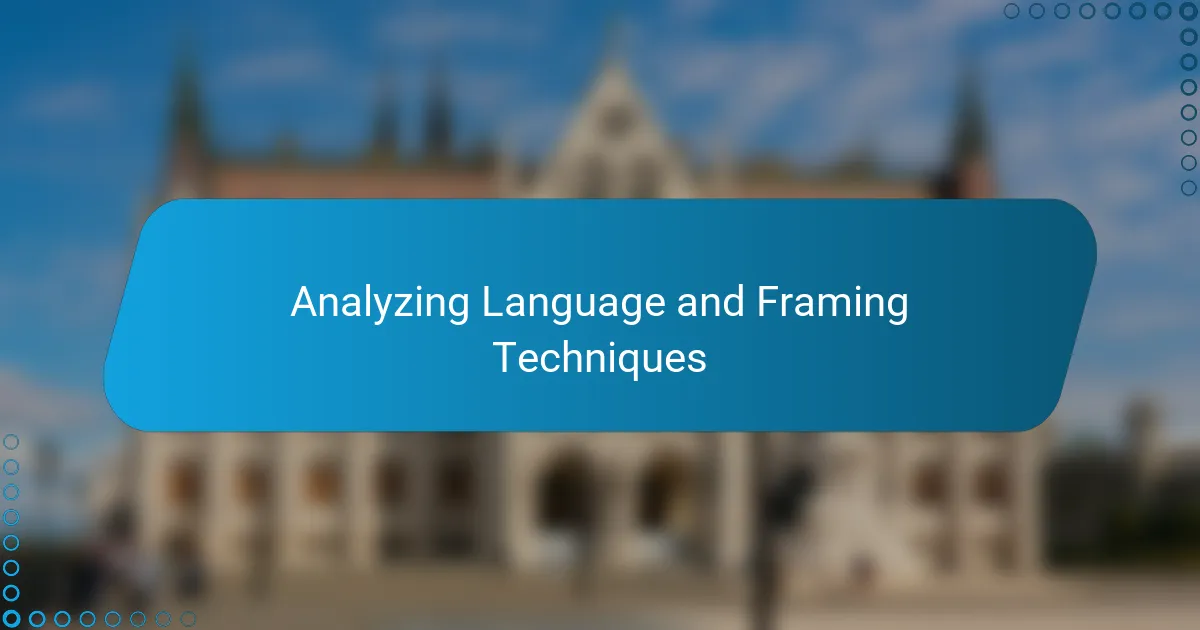
Analyzing Language and Framing Techniques
I’ve found that the specific words reporters choose can drastically shift how a story lands. For example, describing a protest as a “riot” versus a “demonstration” immediately sets a tone, influencing whether you feel sympathy or suspicion. Have you ever noticed how a single word changes your mood about an event before you even get to the facts?
Framing techniques are like lenses that shape what we see and what we don’t. I remember reading two articles about the same political speech—one framed it as a bold move, the other as desperate. That contrast made me realize how powerful framing is in guiding perception, often without us realizing it. Why do you think so many outlets rely on these subtle cues rather than straightforward reporting?
It also struck me how emotional language isn’t just about passion; it’s strategic. When coverage uses words loaded with moral judgment, it pulls us into a narrative where we’re either rooting for a hero or condemning a villain. This made me ask myself: am I forming my own opinion, or am I being steered toward someone else’s?
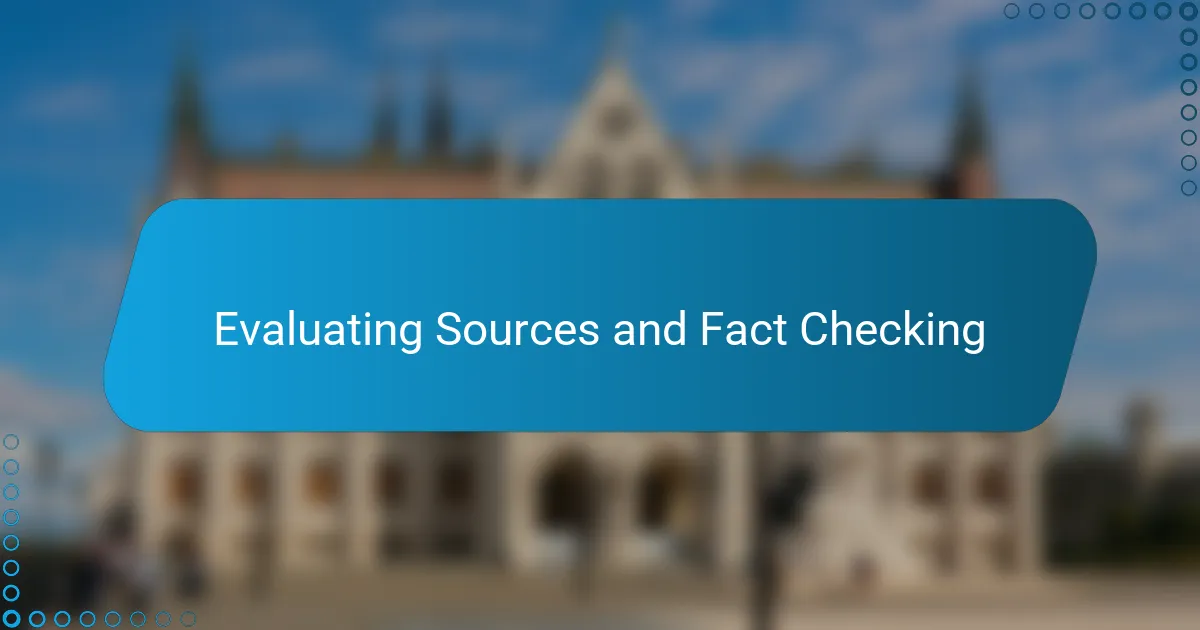
Evaluating Sources and Fact Checking
When I first started seriously fact-checking political stories, I realized just how easy it is to take information at face value. One time, I trusted a source that seemed credible but turned out to be far from it, and that experience taught me to dig deeper before accepting anything as truth. Have you ever felt confident about a claim only to discover later it was misleading or outright false?
Evaluating sources means asking: who exactly is behind this information? I often look for credentials, track records, and possible agendas because even well-known outlets can skew facts to fit their narratives. It’s like being a detective—following the trail not just of facts, but of who’s telling them and why.
Cross-referencing is my go-to move. When different reputable sources tell the same story in consistent detail, I feel more secure about its accuracy. On the flip side, if something only appears in one place or gets contradicted elsewhere, that’s a red flag screaming for skepticism. Have you caught yourself trusting a headline without digging into the details? I know I have, and it’s a mistake worth learning from.
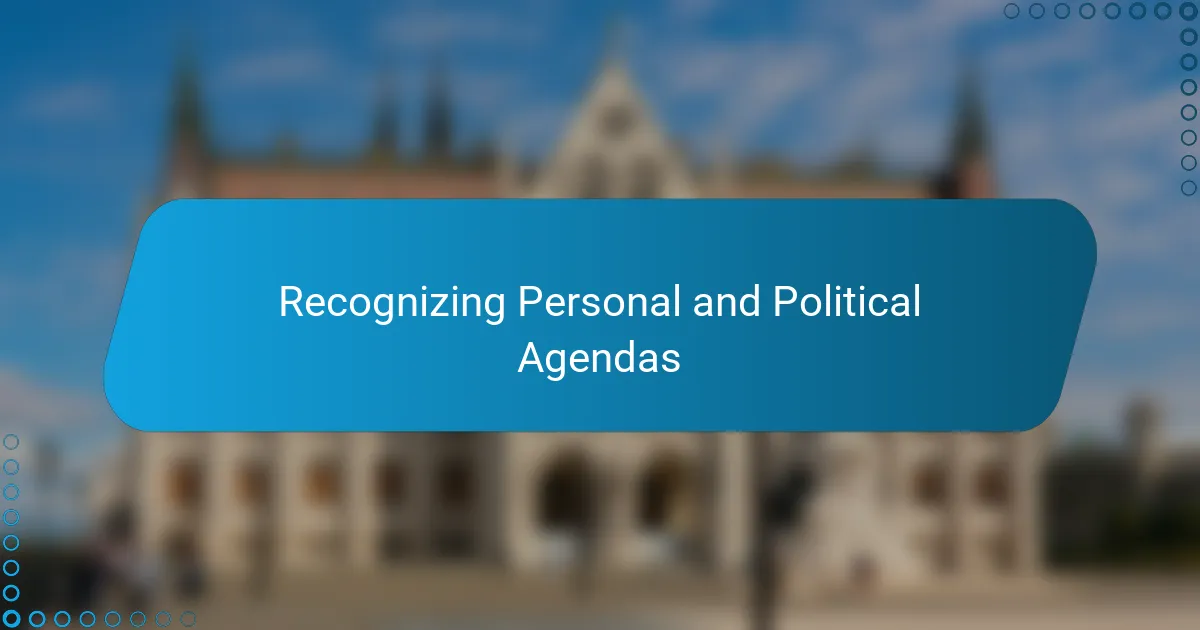
Recognizing Personal and Political Agendas
I’ve noticed how many commentators wear their personal beliefs like badges, making it almost impossible to separate their agenda from the message. Sometimes, I catch myself wondering whether their political affiliations are steering the narrative more than the actual facts. Have you ever sensed that a piece was less about informing and more about pushing a specific viewpoint?
It’s fascinating—and a bit frustrating—how personal experiences shape political commentary. I remember reading an op-ed where the author’s past clearly influenced their take on immigration policy. That made me realize that understanding a commentator’s background is key to unpacking their bias and agenda.
Political agendas often come wrapped in patriotism or moral duty, which can make them feel authentic and urgent. But I’ve learned to ask: whose interests are really being served here? Recognizing these layers helps me stay alert to the subtle ways coverage aims to guide, not just inform.
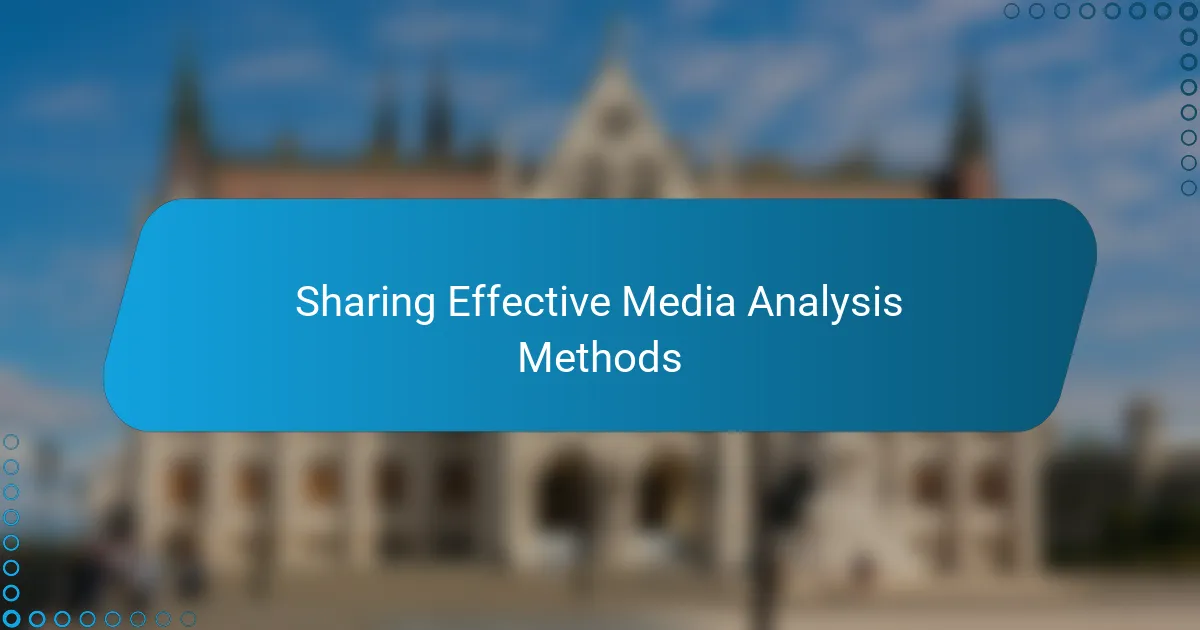
Sharing Effective Media Analysis Methods
One method I find incredibly useful is breaking down coverage piece by piece—looking beyond headlines to dissect the who, what, why, and how. I remember a time when I took an article at face value until I paused to question the intent behind the sources cited; that moment shifted how I approach media. Have you ever wondered what motivated a reporter’s choice to spotlight certain voices while sidelining others?
Another approach I swear by is mapping out emotional triggers embedded within the language. When a story pulls me in with charged words, I stop and ask myself if my response is a reflection of my own views or if I’m being nudged toward a specific reaction. This awareness transforms passive reading into a critical dialogue between me and the content.
Finally, I’ve learned that comparing multiple outlets on the same topic is essential. By seeing how different narratives unfold, I can better identify patterns of bias or omission. Doesn’t it feel empowering to uncover nuances that single-source reading often obscures? This comparative lens has been a game-changer in my media literacy journey, and I think it can be for you too.
